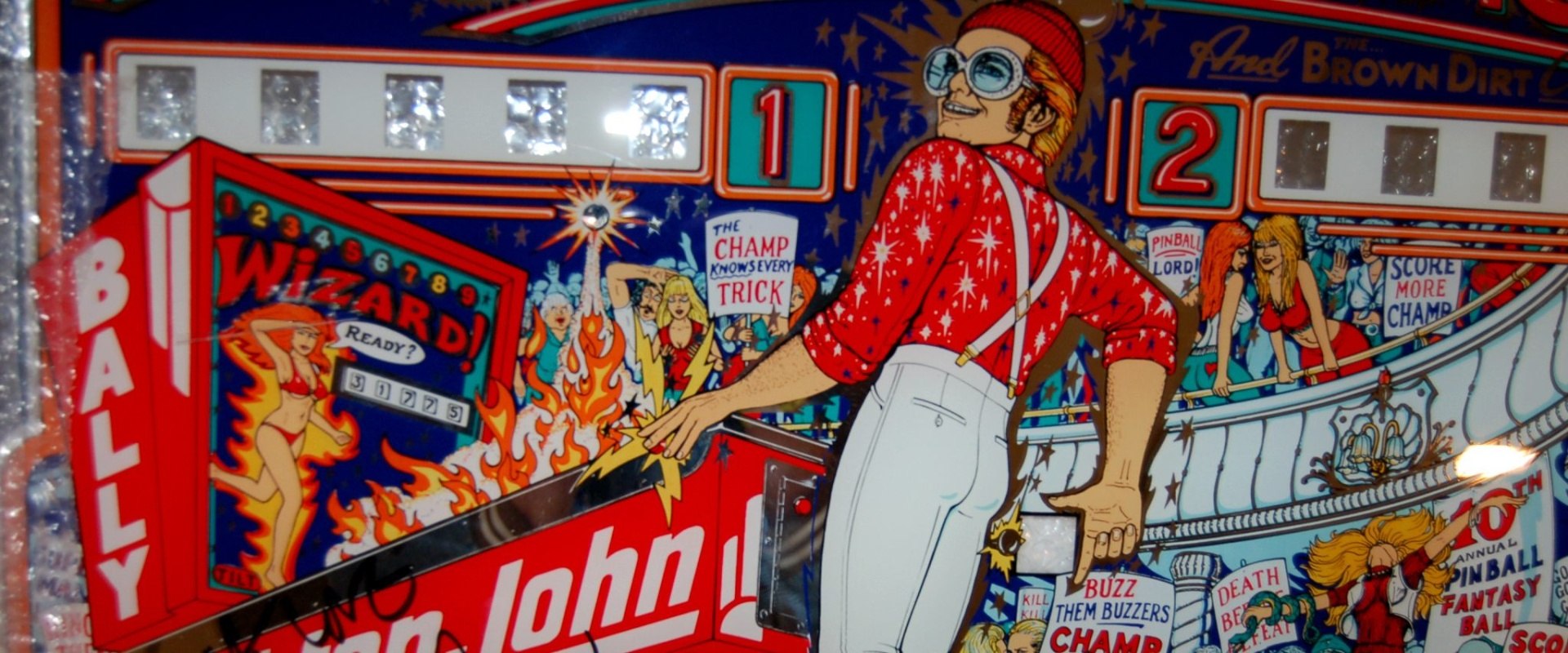Flipper – History
Historical evolution – when the ball learned to roll
The highly complicated pinball machine is actually a mere bagatelle. Bagatelle is the game of marbles that had to be buried in holes with different values. The first bagatelle games were already in Greek culture and then reappeared at some European royal houses in the mid-17th century.
With the big 3 manufacturers of the later Pinball industry BALLY, GOTTLIEB and WILLIAMS began the boom of the Bagatelle games starting from the year 1871.
The first patent was filed by a Mr. Redgrave of Cincinnati, Ohio. The innovation was called the ball trigger in English Plunger, with which the ball was shot on the field. From 1901, these slot machines were equipped with coin slot and later with glass cover.
It was not until 1920 after the First World War that the development of the Bagatelles continued.
Beginning in 1930, the big names such as Harry WILLIAMS and David GOTTLIEB appeared for the first time with their Whiffle devices and the famous Ballyhoo, which was sold for just $ 16 75,000.
Over 100 companies, u. a. The jukebox companies also started producing similar games.
Harry WILLIAMS was again reserved to write Pinball history, in which he built with 6 V batteries electricity in the toy boxes and illuminated certain playing field parts.
Then came Transformers and Tiltpendel in the devices. The Tiltpendel prevented violent shaking on the devices.
In order to get more action play, the bumper was finally invented and used, which counted by touching the ball points by contact. Also Chicago Coin’s was with the Buckaroo (15 bumpers at this time before 1940 already on the market).
Like the jukeboxes, pinball production ended in World War II in 1942, or paused, as most manufacturers again produced parts of weapons.
Historical development – when the pinball fingers were born
“1947” it was time, the GOTTLIEB engineer Harry Maps invented more or less by chance, the movable pinball – those small oval, surrounded by a rubber ring plastic parts that got their names from the people of Germany and also in France.
The Flipperfingeridee came from a bumper, which was randomly controlled, without the ball activated the contact. With the first devices, the flipper fingers were still moved at the same time, now the most common use is the separate control of the left and right flipper fingers with the left and right push buttons.
Very modern electronic devices even manage to inverse the flipper fingers in certain game formations (function reversed) as well as to swap left and right. In the 50’s, the backglasses (pinball discs) were animated with a dancing ballerina, a bucking horse or something similar. Here GOTTLIEB was the number one in the industry.
In 1954, Super Jumbo came on the market, the first pinball machine with 4 counters, which could measure 4 games at the same time – until then, there were only 1-man devices.
At the beginning of 1960, the era of the illuminated signs finally came to an end and the mechanical counters took over the points counting.
Now many features have been invented, like the
Drop Targets (retractable targets)
The Spinner (horizontally rotating target)
Open Gate features (after meeting a certain goal, a goal opens and the ball could roll back to the ball trigger)
Zipper pinball (Flipper closed)
Multi Ball (several balls came into play at the same time)
Up Post (cylinder between the flippers, which prevented the ball from leaving)
Bonus leader (points were collected and added after the end of the ball)
and much more. From the 70’s there was another major change, the usual short 5 cm short pinball machines were replaced by longer 7.5 cm pinball machines.
In 1976, the era of electromechanical counters came to an end and it came the electronic counters and thus sound, music and even more whirl and sound into the game. In the late 1980s, the electronic counters were replaced by multi-function displays (dot matrix). The last pinball machines, which were built, had already built screens and mirror technology and in 2001, the last big pinball manufacturer WILLIAMS stopped its production.

